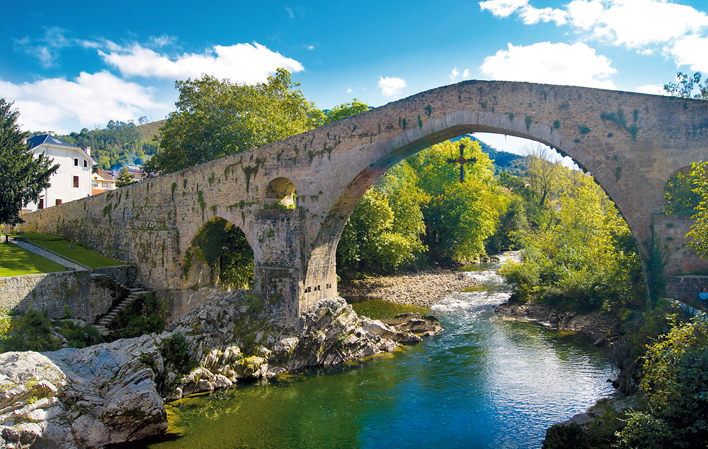THE ASTURIAN SPRING

The routes through Asturias allow us to enjoy the landscape forged by the small distance between the summits of the Picos de Europa and the Cantabrian Sea, creating beautiful contrasts between the valleys and mountain villages and the idyllic beaches and idyllic beaches Which add to the architectural value of the pre-Romanesque churches and the prehistoric offer of the Principality. These routes through Asturias are walks through authentic natural spaces that compete between them in beauty and spectacular.
Today we present a very special six-day route that will allow you to admire and enjoy the contrasts offered by the Asturian spring.

ROUTES THROUGH ASTURIAS. THE ASTURIAN SPRING. DAY 1
We start the first day of the route in Cangas de Onís, entrance to the National Park of the Picos de Europa and symbol of the Reconquest and strategically located between the mountains and the sea. They emphasize the Cross of Don Pelayo and the important sample of paleolítico art of the cave of the Buxu.

ROUTES THROUGH ASTURIAS. THE ASTURIAN SPRING. DAY 2

ROUTES THROUGH ASTURIAS. THE ASTURIAN SPRING. DAY 3

ROUTES THROUGH ASTURIAS. THE ASTURIAN SPRING. DAY 4

ROUTES THROUGH ASTURIAS. THE ASTURIAN SPRING. DAY 5
Gijón is a city open to the sea that offers beaches, culture, excellent gastronomy and a beautiful green environment. In it they emphasize its old neighborhood of fishermen, Cimavilla, that guards precious footprints of the rich history of the city; The beach of San Lorenzo and the hill of Santa Catalina, where the work of Chillida «Elogio del horizonte» is found.
From Gijón we will continue to Cabo de Peñas, the most northern geographical point of the Asturian coast; To continue to Avilés, where we await a beautiful historic center that coexists with the modern building designed by Óscar Niemeyer; And continue to Cudillero, gateway to the Vaqueira region and one of the most beautiful fishing villages on the coast.

ROUTES THROUGH ASTURIAS. THE ASTURIAN SPRING. DAY 6
And the last day we will dedicate it to Oviedo, the old Vetusta. We will have the opportunity to discover its main tourist attractions, among them the pre-Romanesque churches that are part of Unesco World Heritage. We can also visit the Museum of the Cider in Nava and approach the Muniellos Natural Reserve, which preserves the largest oak forest of the Peninsula and houses a rich fauna
